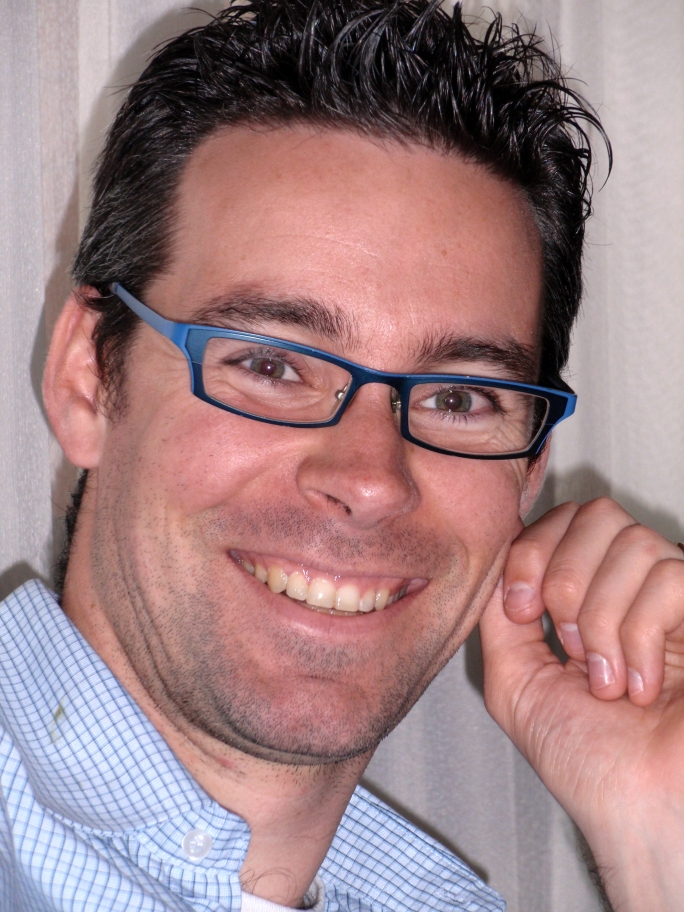Richard Hoogenboom was born in 1978 in Rotterdam (Netherlands) and studied chemical engineering at the Eindhoven University of Technology (TU/e; Netherlands). In 2005, he obtained his PhD under the supervision of Ulrich S. Schubert (TU/e) and continued working as project leader for the Dutch Polymer Institute. The final two years of this appointment were combined with a part-time position as senior product developer at Dophys Medical BV. After postdoctoral training with Martin Möller at the RWTH Aachen (Humboldt fellowship; 2008-2009) and Roeland J. M. Nolte at the Radboud University Nijmegen (NWO veni-grant; 2009-2010), he was appointed as associate professor at Ghent University mid 2010 where he currently heads a research group on Supramolecular Chemistry. His research interests include stimuli-responsive polymers, supramolecular polymers, and poly(2-oxazoline)s.
Please follow the link for further information on Richard’s research group and his recent paper in Polymer Chemistry.
What was your inspiration in becoming a chemist?
My decision to study chemical engineering was a trade off between my love for maths, physics and chemistry at high school. In the end I choose a study that combined all these topics. During my studies I was greatly attracted by organic chemistry inspired by the courses given by Bert Meijer and, despite being at a technical university, I ended up graduating in organic and polymer chemistry.
What was the motivation behind the research in your recent Polymer Chemistry paper?
The Polymer Chemistry paper reports cloud point tuning of biocompatible poly(2-oxazoline)s by attaching glucose substituents to the side chains via thiol-ene addition. This work was motivated by my interest in developing novel methods for the synthesis of functional poly(2-oxazoline)s as well as my interest in adaptive materials. In addition, the resulting glycopolymers are attractive biomaterials for interaction with sugar-binding proteins, namely lectins. The beauty of this work lies in the unexpected lowering of the water-solubility of the copolymers upon incorporation of hydrophilic sugar moieties. This once more shows how little we actually understand about adaptive materials that are not only governed by hydrophilicity, but also by non-covalent interactions, such as hydrogen bonding in this work.
Why did you choose Polymer Chemistry to publish your work?
Despite being a very young journal, in my opinion Polymer Chemistry has already evolved into a well-established polymer journal that is well-recognized by the community. Therefore, publishing our work in Polymer Chemistry ensures wide exposure of our work. In addition, publication in Polymer Chemistry is accompanied by a fast and smooth evaluation and publication process.
In which upcoming conferences may our readers meet you?
In September I will attend the APME 2011 (IUPAC 9th International Conference on Advanced Polymers via Macromolecular Engineering) in Cappadocia, Turkey.
At the 2012 ACS Spring Meeting in San Diego, CA, I will organize a symposium on ‘Poly(2-oxazoline)s and related pseudo-polypeptide structures’ together with Helmut Schlaad and Scott Grayson, where our just published work on glyco-poly(2-oxazoline)s also will be presented.
How do you spend your spare times?
My spare time is mostly spent with my family. It is great to play with my kids of 1 and 3 years and to see how they discover the world around them. To stay a bit in shape after too much time spend behind a computer in the office, you will find me at least one time a week on the tennis court.
Which profession would you choose if you were not a scientist?
This is a very difficult one. I guess I would still be a scientist, but in a different discipline.











